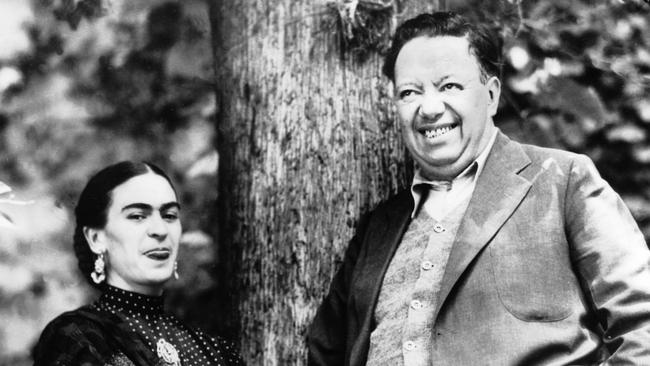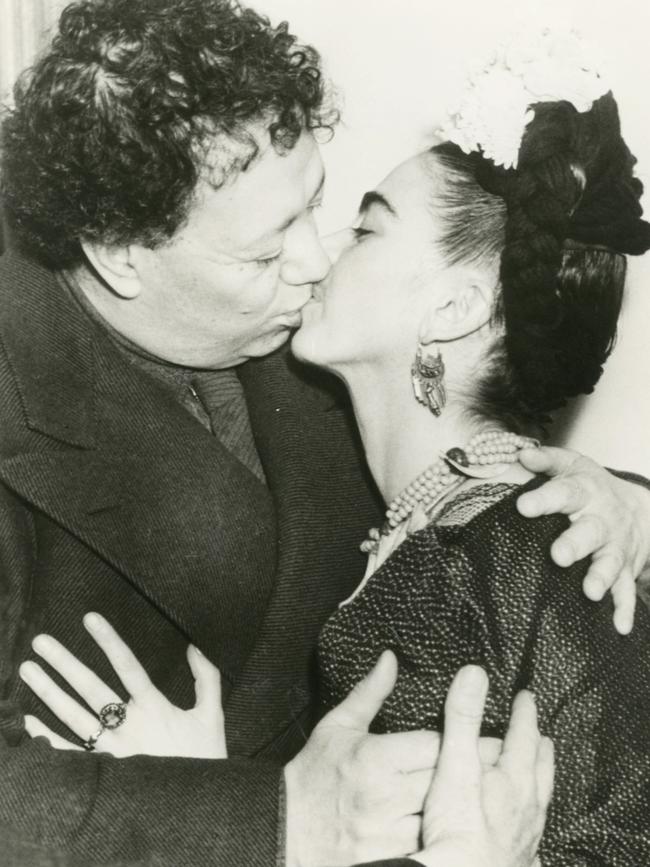Diego Rivera probably helped ill Frida Kahlo kill herself, says grandson
The grandson of Mexican artists Diego Rivera has said he believes his grandfather ‘probably’ helped to kill Frida Kahlo.

They were among the most influential Latin American painters of the 20th century, locked in a tumultuous love affair that has long intrigued their admirers and sometimes threatened to overshadow their own artistic genius.
Now what might be their final secret has emerged. The grandson of Diego Rivera has said he believes his grandfather “probably” helped to kill Frida Kahlo.
The confession was made in a three-part BBC series, Becoming Frida Kahlo, which will be broadcast next month. In the final episode, Juan Coronel Rivera claims that his ancestor, seeing Kahlo racked by excruciating pain in her final days, probably “helped her” end her life.
The official cause of Kahlo’s death, in Mexico City in 1954, was a pulmonary embolism. But there have long been rumours of suicide. At the time, a nurse reported that the artist had taken almost twice her recommended maximum dose of painkillers.
Kahlo seemed to have been aware she was about to die: in her last diary entry, she thanked her doctors and her friends, writing: “I hope the leaving is joyful – and I hope never to return – FRIDA.”

She was 47 and had suffered decades of ill health linked to childhood polio and a serious traffic accident at the age of 18, which broke her spine, leg and collarbone and left her partially disabled.
Her early misfortune set the slight young woman on a path that would lead her to becoming one of the most famous Mexicans to have lived.
After her accident, she set aside her teenage ambitions to become a doctor and took up painting. Her lifetime’s works, totalling about 200, are now all considered parts of the country’s national heritage.
Many of her brooding, introspective paintings, including 55 self-portraits, reflect her tempestuous life with Rivera, a man 21 years her senior and already the most famous mural artist in Mexico as well as a committed communist when they met in the 1920s.
The two, sometimes known as “the elephant and the dove”, married in 1929, despite Kahlo’s mother’s disapproval.
They later separated but married again in 1940. Kahlo had several affairs during her life, with both men and women. The exiled Russian revolutionary Leon Trotsky was one of her lovers. Rivera also had a series of extramarital relationships, including with Kahlo’s sister, Cristina.
James Oles, an expert in Latin American art at the Wellesley College in Massachusetts, said he regretted what he described as the “pure speculation” that Rivera had helped his wife end her life. “There’s no proof,” he said. He saw the claim as another example of how the brilliant artist’s life, and death, continues to detract from her extraordinary talent.
“It is what she has suffered for decades,” he said. “The pathos of her life story obscures her intellectual contributions to the history of art.”
In 2021, Kahlo’s final self-portrait, titled Diego y yo (Diego and I), was sold for $US34.9m at Sotheby’s in New York. Completed in 1949, it is the most valuable work of Latin American art ever to be sold at auction.
The Times



To join the conversation, please log in. Don't have an account? Register
Join the conversation, you are commenting as Logout